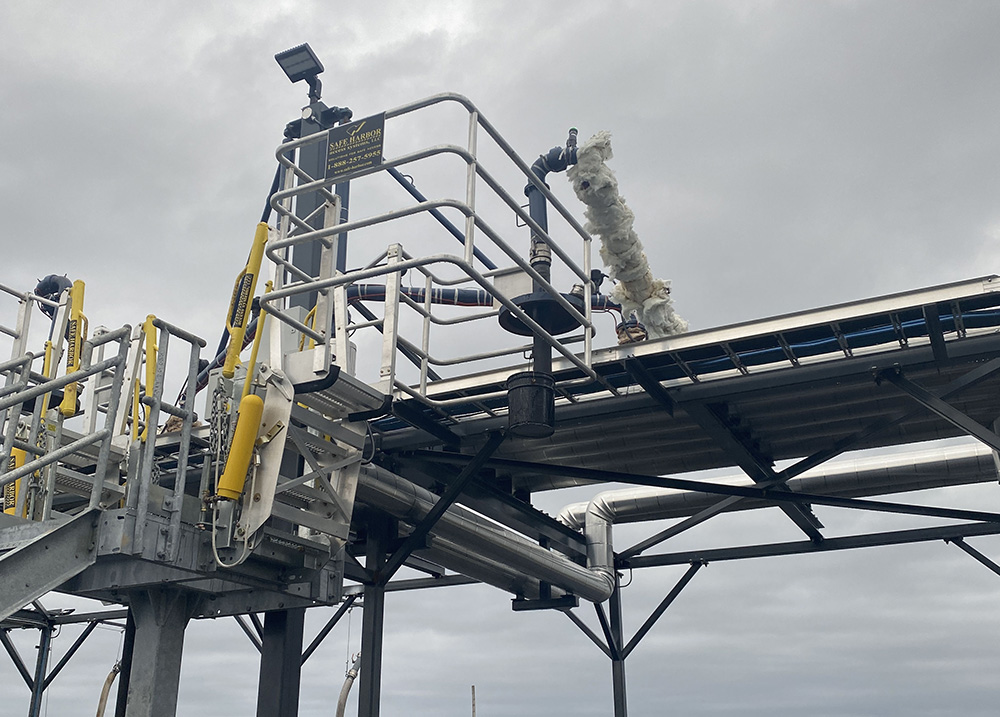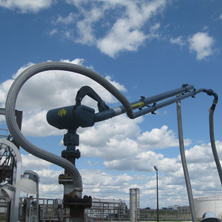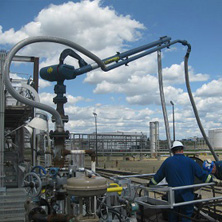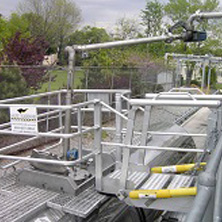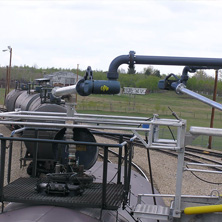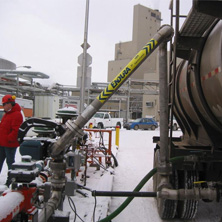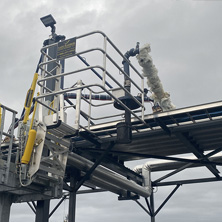WHAT IS A LOADING ARM?
A loading arm is flexible piping attached to gangways or racking that allows for the transfer of liquified materials from either railcar or tank trucks to its required destination. In short, it facilitates the arrival or departure of a variety of types of caustic liquids and solvents into their respective storage destinations. Each loading arm is customizable for a variety of desired features ensuring maximal efficiency is achieved and users are kept safe.
- Fast and reliable delivery in 20 working days or less.
- Menu of Options to Customize Your Arm.
- Included Freight in the Continental US and Canada.
- Each OPW system is designed with personnel and environmental safety as the top priorities, followed by maximum efficiency.
- Each system is built to meet specific application requirements, such as flexibility, physical limitations, personnel preference, operating experience, compliance regulations, vehicle sizes, types and attachments.
- Self Organizing (self-contained and space-efficient)
- Environmentally Friendly (retract out of the way to eliminate potential hazards due to hose run-overs)
- Health-Friendly (self-supported, precision-engineered to eliminate strenuous lifting or moving)
- Ease of operation
- Adequate horizontal and vertical range
- Adequate capacity without excessive pressure drop
- Ease of maintenance
- Exclusive 3-Year Warranty.
- Made in America
OPW loading systems are available in many configurations and sizes. Their superior design provides maximum safety, efficiency and operational benefits ensuring products are loaded of off-loaded safely.
TYPES OF LOADING ARMS
Standard Line Loading Arms
Standard Line loading arms are the most common type. These arms are pre-engineered and are our top sellers when customization is not required.
Top Loading Arms
Top Loading arms are used when greater horizontal range is required for accessing top loading railcars and trucks. Trucks of varying heights also benefit from this type of loading arm as it also provides sufficient vertical movement and drop-pipe lengths. Top loading arms can also be used for tight-fill, vapour recovery, marine and other applications when used with specially designed and engineered components, such as vapour plates, tapered hatch plugs, and inflatable hatch seals. In short, a properly designed top loading system can provide the access and movability that your users require, whilst still ensuring their full protection and safety.
Bottom Loading Arms
Bottom Loading Arm Systems are used when loading and off-loading of petroleum products, liquified gases, solvents and chemicals are performed on the ground.
- Improved safety since operator remains on the ground during loading/unloading
- Quicker connections reduce overall loading/unloading time
- Bottom loading systems create less turbulence in the tank, reducing the danger of generating static electricity.
- Bottom loading reduces vapours and the system can be adapted to also recover displaced vapours
- Tanks can be filled faster and several compartments can be loaded simultaneously
- Bottom-loading islands are simpler and cheaper to build than top-loading racks

